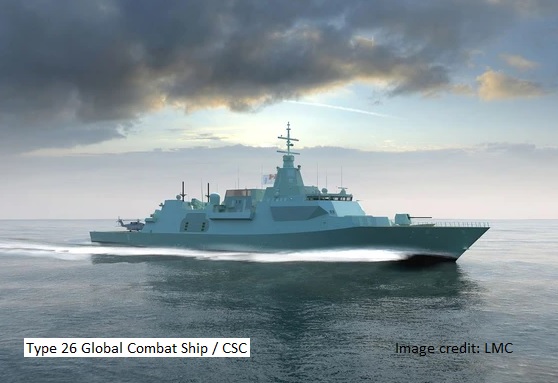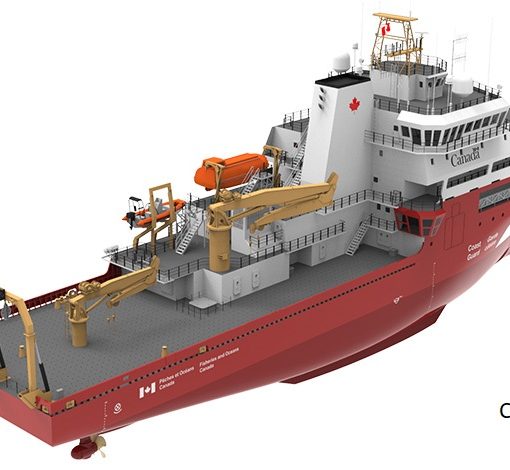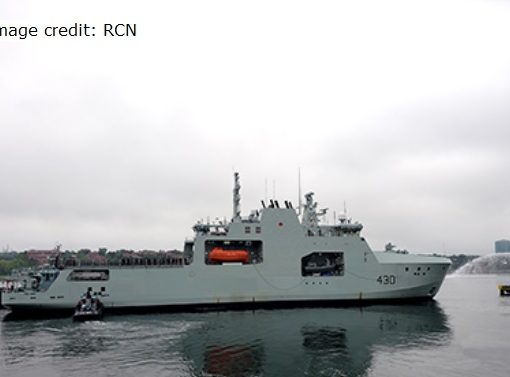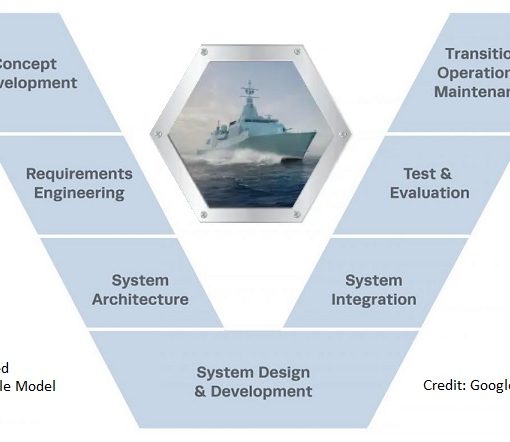Mikaël Perron, 15 March 2021
As the newly released PBO reports takes a shot at comparing other ships program to the actual one being pursued, I would like first to take a look at what are we meant to do with our next generation combat ship. While Canada as a relatively small population, it is a wealthy nation member of North Atlantic Treaty Organization (NATO) and a member of the G7. Canada aims to be a major contributor to the world’s security. Our naval forces are a key component of our commitment to world security. A ship is a part of sovereign soil that travels anywhere within international water and can loiter for an unspecified period in a dedicated area. There are ships routinely deployed around the world and taking part in international operations and exercises, reinforcing ties with allies. Naval forces are the most flexible and economical way to contribute due to their expeditionary nature, but they also see their effect multiply with the support of air assets such as the organic air detachment. Contrary to aerial or ground forces, a deployed ship does not require a large footprint ashore and a welcoming ally nearby to operate from. A large amount of the world’s economy transits through oceans along the sea line of communication (SLOC) and particularly through some choke point like the Panama and Suez Canal, the Hormuz strait, the Malacca strait and Gibraltar strait to name a few. Canada has to contribute to the security of the seas since it has billions $ CAD worth of imports and exports going through the oceans annually.
There is a return to nation to nation competition and the end of the peace dividend of the 1990s. In the 1990s we lost the opportunity to welcome Russia into Western civilization and economics and let it fall into organized crime control to be finally ’saved’ by President Putin and the hope of recovering former glory. It is now regenerating its armed forces, and especially its naval force, with high-end nuclear-powered submarines, new frigates, diesel-electric submarines and corvettes – all capable of firing salvoes of conventionally-tipped or nuclear-armed missiles. These all possess far better technology than the vessels of the past. Russia also plans an expansion of its amphibious forces and the construction of nuclear-powered aircraft carrier. While they don’t mean a direct threat to us for the moment, Russia is definitely aiming at controlling its surrounding area and diminishing Western influence in the eastern hemisphere. Russia has demonstrated its intent and capability to target the West on the cyber battlefield. Its aggressive posture and submarine-launched ballistic missiles gives it the mean to bully everyone.
Exemplifying the new vessels being fielded by Russia are the Admiral Gorshkov-class stealth frigates. These ships are fitted with the best radar developed by Russia as well as 130mm gun, 32 cells vertical launch system (vls) for surface-to-air missiles and 16 to 24 vls for anti-ship cruise missiles. Among these missiles is the Zircon hypersonic missile that is said to have a range of 1000 to 2000 km and a speed of up to Mach 9 that means a speed of about 3km per second that requires the most advanced sensors available to give the crew time to react to any incoming attack. There are plans to build at least 10 ships of that class. Russia is also actively building Yasen-class cruise missile submarines such as the Severodvinsk that rivals the Western counterparts in quietness. The Borey-class nuclear ballistic missile is also in full production and is to number at least 10 vessels each carrying 16 x 10000km range Bulava ballistic missiles. All these new ships have little in common with the Soviet-era ships operated in the 1990s by Russia.
Another big player that is not afraid to play in all aspect of warfare to reach its goal is China. It does not hesitate to operate in the financial, cyber, diplomatic but also the military domain. Its ambitions are clear, whether in its aggressive actions in the South China Sea, anti-democratic Hong Kong policies or in its increasing dominance of UN organisations, and in economic colonisation of less wealthy nations. China has developed ‘lawfare’ to exploit legal methods to achieve its strategic ends. It now possesses the largest naval fleet of the world and it means to exercise maximum influence in Asia and the western Pacific Ocean. As Canada has experienced with the Meng Wanzhou affair, China will not hesitate to bully those who will not bend its way.
China does not militarily aim at Canada but several of our Asian allies and economic partners are directly affected by its policies and aggressive actions. China is actively building every type of military vessel ranging from aircraft carriers all the way to corvettes and patrol boats. It now operates more than 50 nuclear and diesel-powered attack submarines, four nuclear-powered ballistic missile submarines, two aircraft carriers, more than 50 frigates and 30 destroyers. The newest ships of the fleet are the powerful Type 055 destroyers that resemble more of a cruiser. The class is planned to number 16 vessels measuring 180 metres long, with a 13000 tonne displacement. They are fitted with powerful sensors, 130mm gun, torpedoes and 112 cells VLS for surface-to-air, anti-ship and land-attack cruise missiles. China is also actively pursuing an access denial strategy that involves the development of long-range hypersonic anti-ship cruise missiles to keep Western forces thousands of kilometers away from what China considers its backyard. These missiles have the potential to defeat any defensive system actually in service within Western naval forces. There is a huge proliferation of submarines in the world and especially in Asian waters. Nowadays you can find yourself hunting submarines in every subsea condition ranging from shallow coastal waters to the deepest open ocean conditions.
I can clearly remember the national media laughing at the naval forces we were sending to the first Gulf war. The first Halifax-class frigate was still being built and the first two Iroquois-class destroyers to be reconfigured as area-air defence destroyers under the TRUMP program were not available. We had to outfit our anti-submarine warfare (ASW) designed elderly ship with an extra gun, portable anti-air missile (in the case of the two steam-propelled ship) and self-defence close-in weapon system (CIWS) from the shelf awaiting to be installed on the new frigates and send them into harm’s way. The outfitting was done in record time by our naval team. A big part of the reason that our CF-18 fighter jet also got sent was to provide cover to the ships since we had no area-air defense capability at that time and the Iraqi forces had Exocet missiles in their inventory that they already had fired at US frigates in the late 1980s. After the Halifax-class frigates and modernized Iroquois-class destroyers were put into service, we had a true world-class fleet able to independently deploy throughout the world. We notably deployed a task force in the Arabian sea and surrounding area for 2 1/2 years following 9/11 in the USA. We now are without the area-air defence capability since the retirement of the Iroquois-class destroyers and the newly refitted Halifax-class frigates recovered just enough combat capability to bring us to the arrival of the new Canadian Surface combatant (CSC). There should be no further delays on the delivery of the replacement capability.
The CSC program aims at building a new class of multi-purpose frigates that are to excel in every aspect of warfare. If you choose to bring a meaningful contribution to world security, you get the right ship in proper quantity to achieve your goal. While some people might think that possessing 15 combat units is a sign of belligerence, they should understand that 15 surface units will at most deliver 5 to 7 ships at a push, available for operations at any one time. You have to take into account refits in dry dock, the need to carry out crew training and weapon tests plus also rest the sailors and maintain the ship’s equipment even when the vessel is not in refit. In wartime, you might send more ships but also could lose some in battle and need to send replacements. Even in peacetime, fewer ships means that they will work harder. The more worn out they become, the more expensive they are to keep in service. You also need the people to operate them and they too can become worn out if there is only a small pool of them with the right training and experience. That number of ships also allows us to keep about the same number of sailors in the navy which is a major component of the navy’s budget.
As currently designed, the CSC means to keep our sailors safe in the face of any threat once they start deploying around the world. While these ships incorporate mainly tested and trialed component such as engines and weapons, they are to use the latest in sensors technology that is where we need to be in order to be relevant. If we don’t mean to properly invest in the right capability, we might as well just purchase half a dozen light frigates to patrol our Exclusive Economic Zone (EEZ) and not complain as the world is being shaped without our concerns being considered. That is a bit what going for an all Type 31 frigate fleet would correspond to.
The COVID-19 pandemic will not slowdown the investment in military capability for those countries which mean business on the world stage. Sadly, gunboat diplomacy is still around and is being used as a political tool on a day-to-day basis. Canada is to remain at the forefront on the diplomatic and soft power stage but needs to back it up with hard power in order to be taken seriously by those who think in the ‘’survival of the strongest’’ doctrine. If you are present and displaying credible capabilities, one might think twice before acting aggressively. Of course, mankind has no excuse to fight among itself for scarce resources world and there are much better ways available to us. That is a totally different discussion to be had. But until we all agree to move beyond conflict, we must be ready to face any challenge thrown at us.






7 thoughts on “Why Canada needs 15 state-of-the-art frigates”
Anyone using the term “stealth frigate” is hard to take seriously. All warships are inherently stealthy to varying degrees.
It is more like a ‘cut and paste’ mistake from wanting Admiral Gorshkov spelling right. Definitely agree that ‘stealth’ was a useless term in the text!
Hi Dave. The only thing “stealthy” of any modern warship in the world is how silent they are during ASW operations. The CSC frigate was specifically designed to be silent and has the most sophisticated sonar system in the world to detect modern, more silent submarines. Canada has had a lot of ASW expertise in the past and is renowned throughout NATO to be able to pick up Nuclear/Non-nuclear subs faster and further than others. To say that all warships are inherently stealthy to varying degrees is simplistic to say the least. Most American warships including their A/C carriers are not that silent at all and are easy to pick up. Most nuclear subs in the world are also noisy but are getting better at reducing their sound signatures, so harder for modern warships to pick up, however the CSC ASW Frigates will be leaps and bounds ahead of any warship in the world at finding any submarine.
Hello Mikaël. Nice to hear from someone “pro” CSC Frigate for a change. The Canadian Naval history has been well documented and lord knows we don’t need another Avro Arrow disaster. Both the Russian and Chinese navies are upgrading their fleets at an alarming rate for various reasons and I agree as a nation, we must be able to counter these threats with a multi-purpose Frigate like the CSC Type 26 that excels in all facets of warfare and has capabilities that works in any task group scenario. Lots of $$ and difficult to produce 15 of them at a “minimum” requirement for sure. Yes, the Zircon hypersonic missile is a problem for all allied nation for sure and must be able to be defeated if required. Training will absolutely be the key to the CSCs success in the future. This is a “world class” ship able to accomplish any mission required by the government. The Canadian people deserve nothing less. Cheers!
Dave – the term – which is widely used – has to do with the radar cross section. A better description might be ‘less observable’. Yet another design criteria for naval architects to meet. With regard to acoustics it is not so much to do with detectability but more to do with lowering the noise threshold so as to maximize the signal to noise ratio of the ship’s acoustic sensors. But suspect you knew this.
Absolutely Jim! Cheers!
The question is why are these ships costing approximately $3B more per unit than recent acquisitions by NATO allies. The new German frigates came in around $1.1B per unit and the new US frigates in the same price range. Like the Type 26 both of those models are said to be closer to destroyer than frigate. Read that it was originally conceived to have 3 destroyer type vessels with AD and 12 frigates, but it wasn’t feasible to have only 1 AD equipped vessel on the West Coast so all vessels are being equipped with AD. Rather than have all ships with AD capability why not have 4 destroyer type ships with AD – 2 on each coast and one less frigate in the fleet?